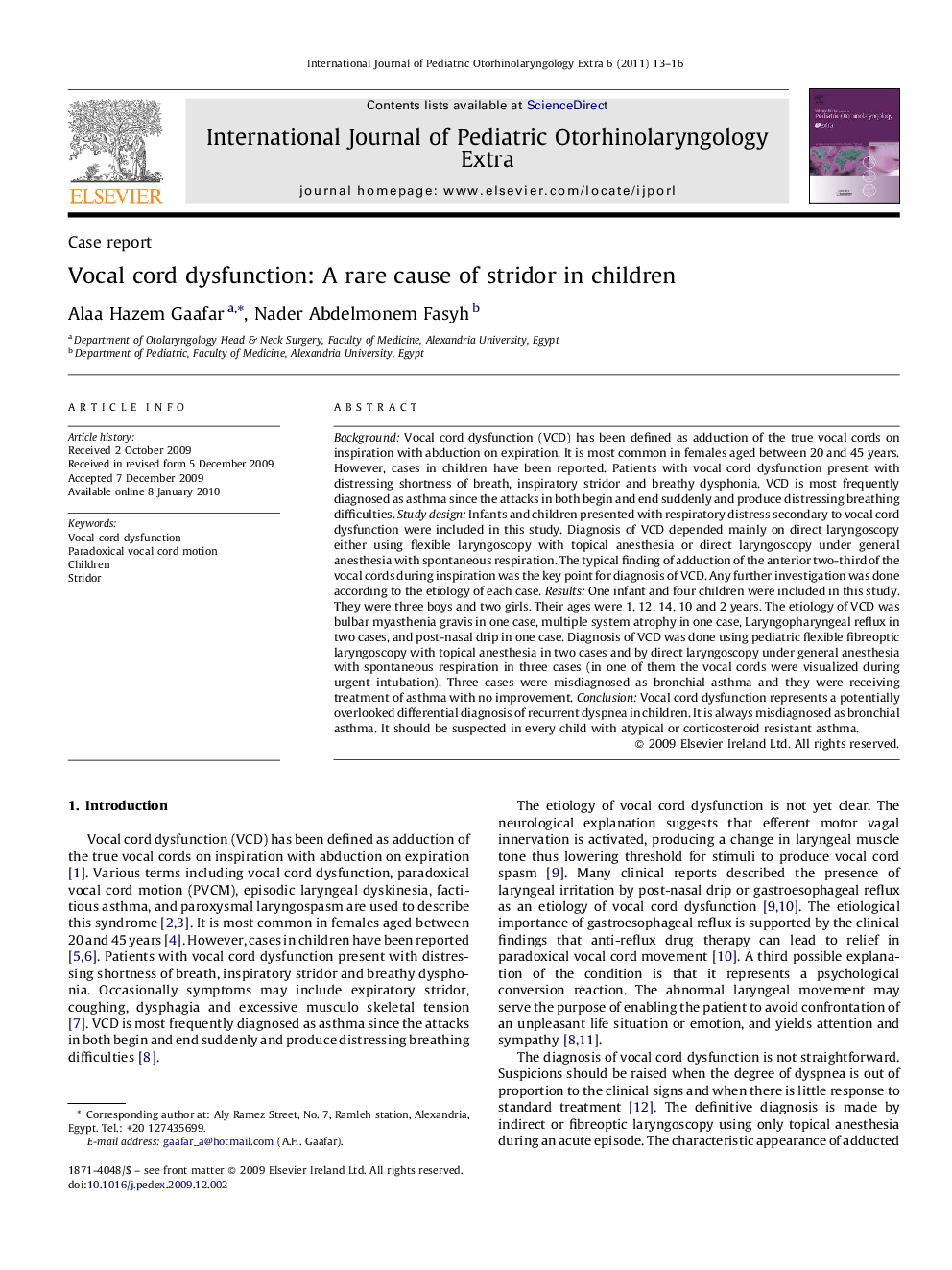| Article ID | Journal | Published Year | Pages | File Type |
|---|---|---|---|---|
| 4116009 | International Journal of Pediatric Otorhinolaryngology Extra | 2011 | 4 Pages |
Background: Vocal cord dysfunction (VCD) has been defined as adduction of the true vocal cords on inspiration with abduction on expiration. It is most common in females aged between 20 and 45 years. However, cases in children have been reported. Patients with vocal cord dysfunction present with distressing shortness of breath, inspiratory stridor and breathy dysphonia. VCD is most frequently diagnosed as asthma since the attacks in both begin and end suddenly and produce distressing breathing difficulties. Study design: Infants and children presented with respiratory distress secondary to vocal cord dysfunction were included in this study. Diagnosis of VCD depended mainly on direct laryngoscopy either using flexible laryngoscopy with topical anesthesia or direct laryngoscopy under general anesthesia with spontaneous respiration. The typical finding of adduction of the anterior two-third of the vocal cords during inspiration was the key point for diagnosis of VCD. Any further investigation was done according to the etiology of each case. Results: One infant and four children were included in this study. They were three boys and two girls. Their ages were 1, 12, 14, 10 and 2 years. The etiology of VCD was bulbar myasthenia gravis in one case, multiple system atrophy in one case, Laryngopharyngeal reflux in two cases, and post-nasal drip in one case. Diagnosis of VCD was done using pediatric flexible fibreoptic laryngoscopy with topical anesthesia in two cases and by direct laryngoscopy under general anesthesia with spontaneous respiration in three cases (in one of them the vocal cords were visualized during urgent intubation). Three cases were misdiagnosed as bronchial asthma and they were receiving treatment of asthma with no improvement. Conclusion: Vocal cord dysfunction represents a potentially overlooked differential diagnosis of recurrent dyspnea in children. It is always misdiagnosed as bronchial asthma. It should be suspected in every child with atypical or corticosteroid resistant asthma.
